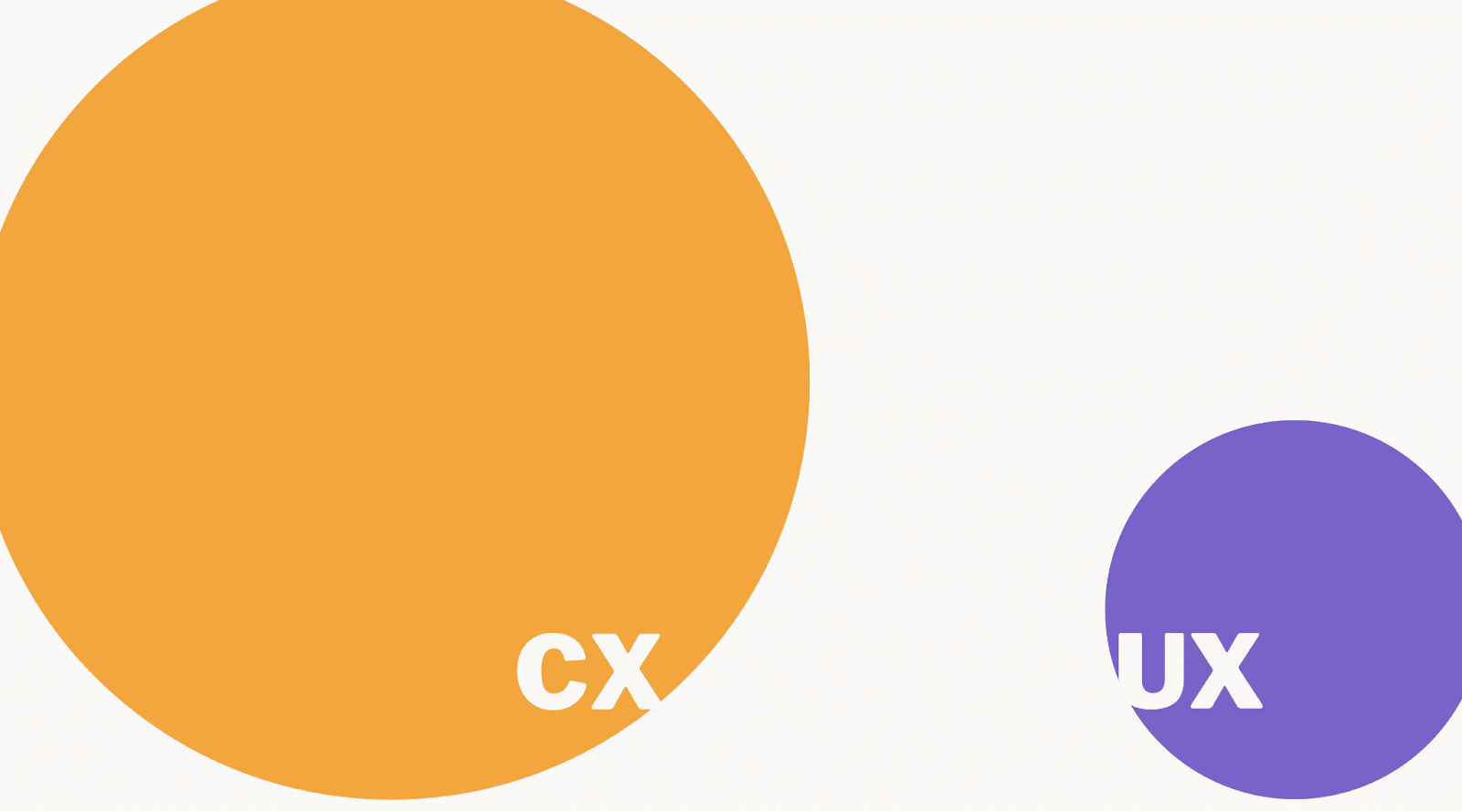Need help implementing your CX goals?
Our industry knowledge and experience are at your service. Contact CX by Design for a free 30-minute session and take the first step towards a thriving future!

edit Lis Hubert
event 03/04/2024
pace 4 mins
Previously in this series, we’ve answered the questions “What is CX?” and “What is UX?”. However, many professionals get CX and UX confused; some people even think they’re basically interchangeable. In this post, we’ll discuss the differences between CX and UX.
Both CX and UX are people-centered and research-oriented. Both operate under the human-centered design umbrella. In summary:
To understand the difference between CX and UX, it’s crucial to remember one thing: the user is not always the customer. For example, a business owner might buy some software for their employees to use. The business owner is the customer, but they are not the user. In this case, the users are the employees.
To make things more complicated, there is a significant overlap between the two fields. In fact, UX is part of the CX toolkit; we could say that CX broadens the scope of UX. Or we could say that UX zooms in on one aspect of the experience, while CX zooms out and considers all the experience over time. CX by Design Founding Partner Diana Sonis sums it up this way:
“UX is concerned with interactions a person has with either the whole or a part of a product or service – e.g. how they use the ticketing kiosk at the airport or how they use a writing app. It’s about meeting users’ needs during a specific interaction.
“CX is concerned with the customers’ overall experience with the brand – all the touchpoints, the entire customer journey. In addition to how customers use a ticketing kiosk, it’s how they interact with Delta over time. It’s everything from brand discovery to troubleshooting with customer service. CX is concerned with meeting customers’ expectations of the brand overall.”
Now that we understand each field’s applications, let’s consider 5 specific ways UX and CX diverge:
As we mentioned earlier, the CX process often includes UX; UX is responsible for the individual interactions that make up part of the overall customer experience. As CX by Design Founding Partner Lis Hubert says,
“If you’ve ever been on a road trip, you’ve had your travel plan from origin to destination. You’ve also probably stopped along the way for breaks. All those stops along the way contributed to your overall experience. We consider CX as your review of the overall trip and UX as your review of an individual stop. Each stop contributes to the overall experience, but it’s also a separate entity.”
Even with good UX, CX can ultimately fail; check out this example on Digital.gov. And the reverse is also true; a company with a positive customer experience in some areas can have poor UX in others.
To sum up, UX and CX are related but distinct fields, and both are important to your company’s success – and to your customers.
CX and UX are both human-centered fields. What does this mean, and how does CX fit into the broader discipline of human-centered design? We’ll answer these questions in the next article.
Our industry knowledge and experience are at your service. Contact CX by Design for a free 30-minute session and take the first step towards a thriving future!

Want to help your company thrive using the principles of human-centered design? Our FREE 30-minute introductory session will get you on the right path!
Schedule your free consultation